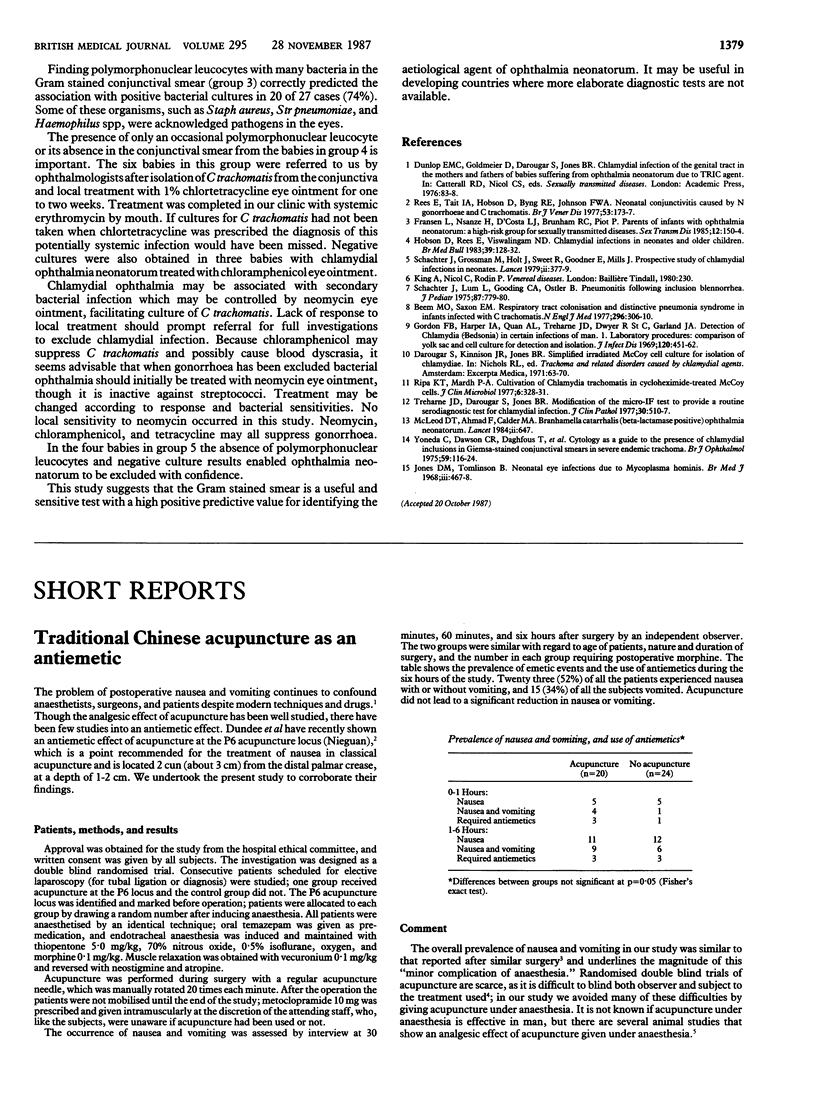Full text
PDF

Selected References
These references are in PubMed. This may not be the complete list of references from this article.
- Dundee J. W., Chestnutt W. N., Ghaly R. G., Lynas A. G. Traditional Chinese acupuncture: a potentially useful antiemetic? Br Med J (Clin Res Ed) 1986 Sep 6;293(6547):583–584. doi: 10.1136/bmj.293.6547.583. [DOI] [PMC free article] [PubMed] [Google Scholar]
- Palazzo M. G., Strunin L. Anaesthesia and emesis. I: Etiology. Can Anaesth Soc J. 1984 Mar;31(2):178–187. doi: 10.1007/BF03015257. [DOI] [PubMed] [Google Scholar]
- Tseng C. K., Tay A. A., Pace N. L., Westenskow D. R., Wong K. C. Electro-acupuncture modification of halothane anaesthesia in the dog. Can Anaesth Soc J. 1981 Mar;28(2):125–128. doi: 10.1007/BF03007255. [DOI] [PubMed] [Google Scholar]
- Vincent C. A., Richardson P. H. The evaluation of therapeutic acupuncture: concepts and methods. Pain. 1986 Jan;24(1):1–13. doi: 10.1016/0304-3959(86)90022-9. [DOI] [PubMed] [Google Scholar]


